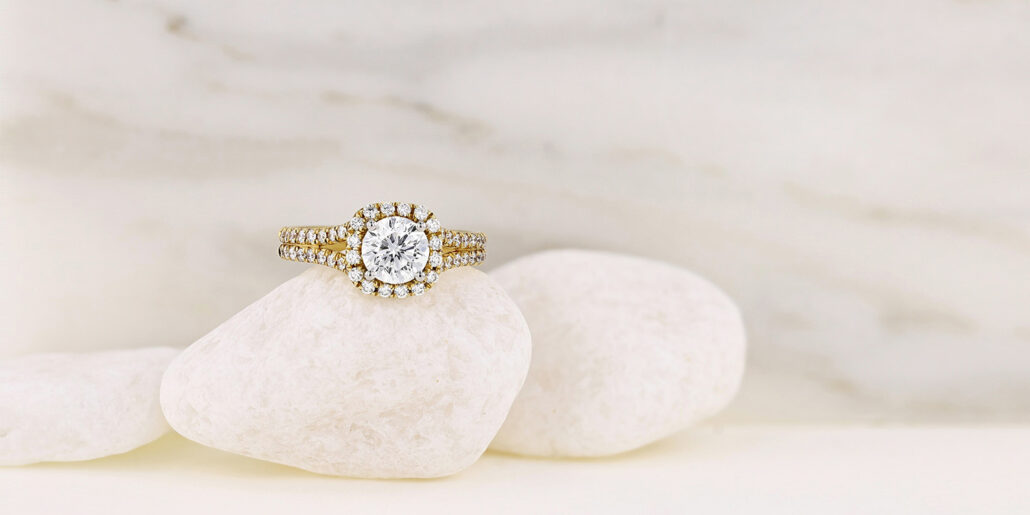When choosing the perfect engagement ring, educating yourself on a few key aspects of this important purchase will help you find just the right one. An engagement ring is a once-in-a-lifetime investment, and like all investments, you want to be knowledgeable so that you are confident in your decision.
Because picking an engagement ring can be overwhelming, Borsheims is here to guide you through the experience. You don’t need much to get started. All you’ll need to know before you start ring shopping is your favorite setting style, the 4C’s of diamonds and the wearer’s ring size.
Determine Your Ring Size
When a proposal occurs, the ring should slide on easily but have a little resistance so it doesn’t fall off when worn. Finding the correct ring size is easy if the couple is shopping together, but can be more difficult when the proposal is a surprise. Choosing the right ring size is easy if you follow a ring size chart. All you’ll need to do is measure your finger or that of your spouse-to-be and match the measurement to the correct ring size listed on the chart. Download our ring size printout for more helpful tips on measuring your ring size at home.

While measuring ring size for yourself is one thing, it’s a different matter if you’re hoping to keep the purchase a surprise! Here are some suggestions that will help you to find out your future spouse’s ring size without alerting them to your plans:
Get help from your partner’s friends and family
If you ask someone close to your partner that knows them well, you may be lucky enough that they already know the answer from previous conversations. And if not, ask them to subtly work the question into conversation.
Measure it while they sleep
This one can be tricky if they’re a light sleeper but if you’re feeling stealthy, try wrapping a piece of string around their finger while they rest and then use the above measurements to get their size.
Choose Your Ring Setting Style
A great place to start your search is by picking your ring setting. A ring’s setting determines how your center diamond is mounted and gives your ring its personality. From traditional to alternative, your setting should reflect your personal style and the options are endless.
TIP: If you don’t know the ring style you or your soon-to-be fiancé is hoping for, but want to keep your proposal a surprise, we recommend selecting a diamond and having it mounted in a simple solitaire setting. Solitaires hold a variety of diamond shapes and accommodate any budget. Then after the proposal, you can shop for something that tells the story of your love, together.

Select Your Ring’s Precious Metal
Your setting can be made of a variety of metal types and colors. A ring’s metal not only adds to the personality of the design but it can even enhance the look of the gems it’s supporting. Here’s a rundown of the most popular options for engagement rings:
- Platinum – The strongest jewelry metal and 30 times more rare than gold making it more expensive as well. It is 90 to 95% pure and does not cause allergic reactions.
- 18k Gold – Gold is one of the most precious metals in the world. Because pure 24k gold is too soft for everyday wear, 18k gold is a better option for engagement rings. This metal is 75% gold and 25% other alloys that determine its color. Naturally yellow and rich in color, this precious metal is more soft than platinum but also more affordable.
- 14k Gold – Considered the most wearable, it is comprised of 58.3% gold and 41.7% other pure alloys, making it the most durable but also more moderate in color and price.
Different alloy mixes produce different gold colors. The most popular gold colors for engagement and wedding rings are yellow, white and rose.
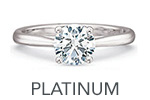
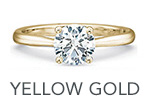
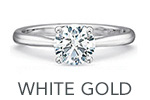
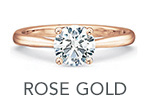
Find Your Diamond
The Four C’s — cut, color, clarity and carat weight — are a critical element in your engagement ring search. Being educated on what each “C” means will help you determine what is most important to you in a diamond. Some shoppers value color, choosing near colorless diamonds and are indifferent if this means a smaller stone for their budget. Other shoppers may be interested in a particular cut of diamond and not mind if many inclusions are present. Ultimately, it is up to you and your partner what characteristics are important to you. Below is a short guide to help you understand each “C”.
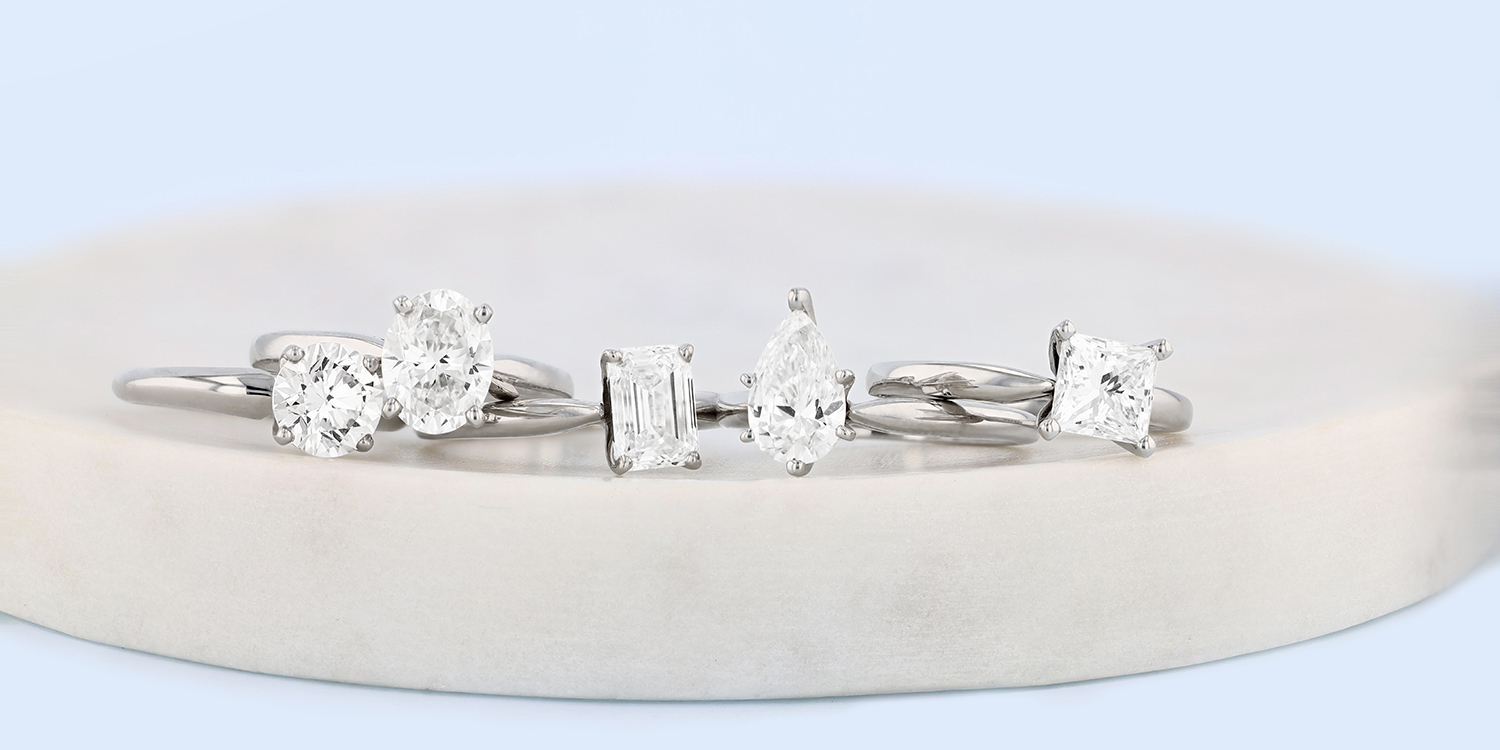
Cut
More often than not, we associate a diamond’s cut with its shape, i.e. round, heart-shaped, oval, etc. But the diamond cut is far more than that. This man-made contribution to the diamond determines the gem’s ability to reflect natural light. The amount of sparkle and brilliance are direct results of the final proportions, finish and shape of the diamond.

Color
The color grade of a diamond refers to the amount of visible body color, with the finest white diamonds carrying a “D” color grade. Most diamonds have at least a trace of yellow or brown body color. With the exception of some natural fancy colors, the colorless grades are the most rare.

Clarity
Clarity indicates the degree to which a diamond is free of tiny natural internal inclusions and external blemishes. The highest grades go to gems with few or no imperfections. A diamond’s clarity grade is determined under 10-power magnification by an expertly trained diamond grader.

Carat
The metric carat, which equals 0.20 grams, is the standard unit of weight for diamonds and most other gems. One carat is divided into 100 “points”. A diamond weighing 50 points = 0.50 carat (ct).

Conflict-Free Diamonds
Borsheims is proud to work with other members of the diamond industry, international governments, the United Nations, and nongovernmental organizations to eliminate the trade in conflict diamonds. Through more than five years of work, it is now estimated that more than 99% of the world’s diamonds are conflict free.
Borsheims supports the Kimberley Process and only buys its diamonds from legitimate, reputable manufacturers that adhere to the Voluntary System of Warranties. That guarantee is written on the back of every receipt from Borsheims. For additional information about the Kimberley Process and the work being done to eliminate the trade of conflict diamonds, please visit the diamond industry’s website, www.diamondfacts.org.
If you need help picking out the perfect engagement ring, one of the engagement experts at Borsheims would be happy to assist you. Stop into our store or text or call 402.391.0400 during store hours to speak with one of our friendly and knowledgeable sales associates.
